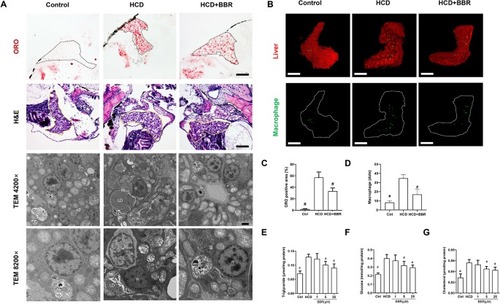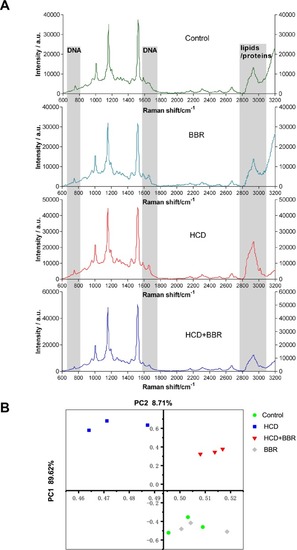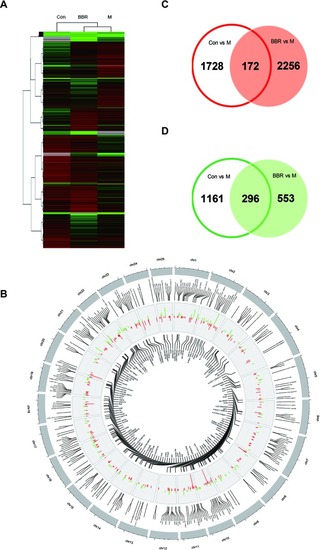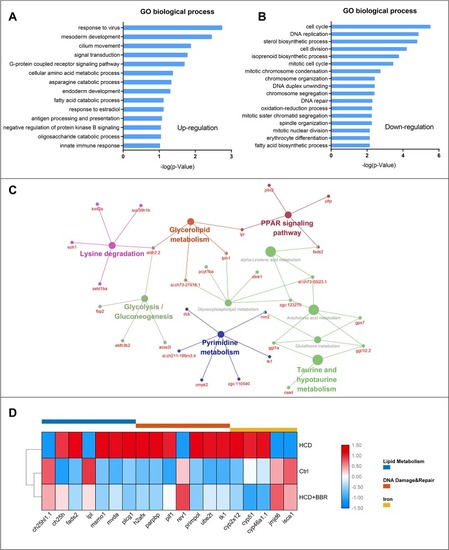- Title
-
Microarray Expression Profiling and Raman Spectroscopy Reveal Anti-Fatty Liver Action of Berberine in a Diet-Induced Larval Zebrafish Model
- Authors
- Chen, B., Zheng, Y.M., Zhang, M.Q., Han, Y., Zhang, J.P., Hu, C.Q.
- Source
- Full text @ Front Pharmacol
|
Effects of high-cholesterol diet (HCD) and berberine (BBR) treatment on the growth of zebrafish. PHENOTYPE:
|
|
Effects of berberine (BBR) on hepatic steatosis in high-cholesterol diet (HCD)-induced zebrafish larvae. PHENOTYPE:
|
|
Raman spectral analysis of liver tissue of zebrafish larvae treated with berberine (BBR). |
|
Effects of berberine (BBR) on the hepatic oxidative stress in high-cholesterol diet (HCD)-induced zebrafish larvae. PHENOTYPE:
|
|
Trend analysis of gene expression patterns in larval zebrafish liver. |
|
Gene ontology, KEGG enrichment, and functional category analysis. |
|
Validation of the microarray data using quantitative real-time PCR (qRT-PCR). Relative expression levels of the selected genes determined using qRT-PCR. #Compared with the HCD group, EXPRESSION / LABELING:
PHENOTYPE:
|







